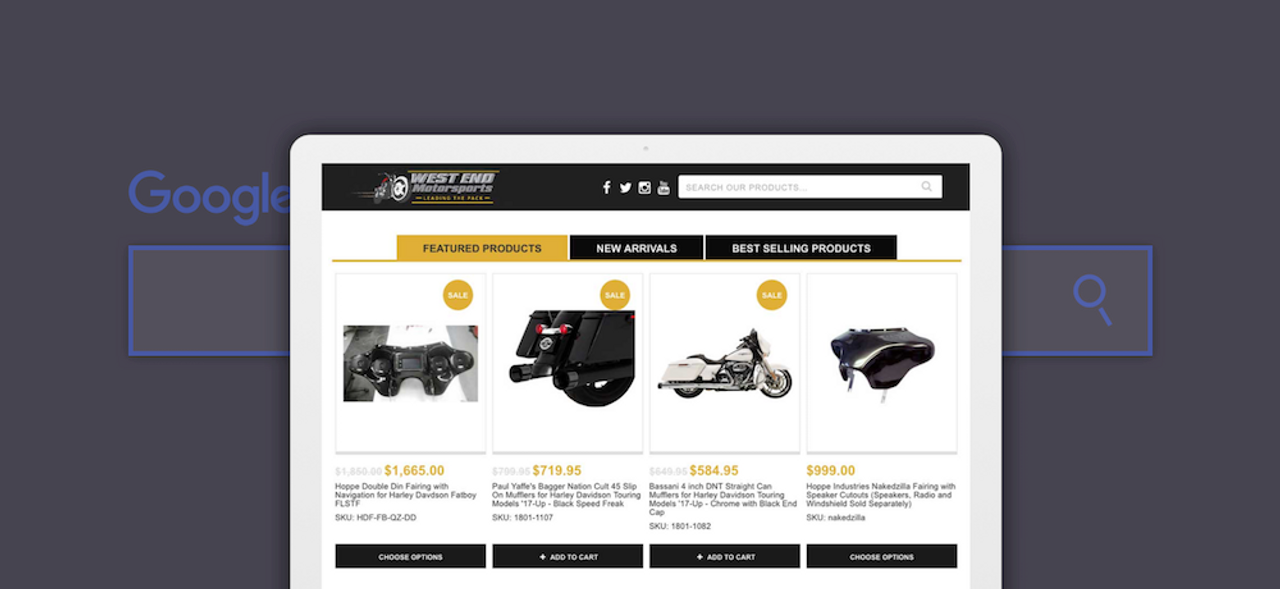How to Use Single Keyword Ad Groups (SKAGs) to Drive Highly Relevant, Highly Targeted PPC Traffic
14th Jul 2018
Whether single keyword ad groups (SKAGs) are old news or a new find to you, they’re quickly becoming a well-known best practice for PPC account setup.
First, what are the main benefits for ecommerce managers and brands?
Why SKAGs Are Important for Ecommerce Brands
- Get a granular overview of your campaigns. Make AdWords campaign optimization more effective with better tracking.
- Relevance, Quality Score, & Expected CTR. Create highly specific ads to improve your Quality Score and click-through rate to drive more traffic and sales.
- Optimizing & Expanding Single Keyword Ad Groups. Easily identify your top performing products/services to adjust your campaigns appropriately.
There are quite a few different ways to organize your campaigns when it comes to AdWords, so you’ll want to make sure you’re using what’s been proven to work.
Certain types of campaigns call for certain types of audiences and ad groups.
But in the world of PPC, where bids and clicks slowly chip away at your ad budget with every drop of traffic, it’s important you keep campaigns focused.
Focused on what?
Focused on generating traffic that’s going to generate the highest ROI.
You can’t afford to be wasting ad spend on keyword bids that are generating low intent traffic by targeting too large an audience.
The “larger audiences” I’m referring to here are the ones brought in by the many search queries tied to broader keyword match types that are plaguing your ad groups — or what we at KlientBoost call the “Iceberg Effect.”
An example of the Iceberg Effect — look at how some of the queries really differ from the keyword. – image source
The image above shows how most of the search terms that are triggering the ad are completely irrelevant to what the ad is offering. Broad match keywords are typically part of the problem.
The ad is specific to the keyword “file for bankruptcy” but not all these queries come from people with the same intent or interest level.
This isn’t going to do anything good for your click-through-rates (CTR), which – in turn – will hurt your Quality Score as well.
These wasteful campaigns drain your ad spend without generating actual conversions and revenue.
Basically, they’re just throwing your ad budget on the pyre and hoping for solid traffic.
But don’t worry…
There’s a better way. And the way is: Single Keyword Ad Groups (SKAGs).
SKAGs organize your campaigns into highly targeted and highly relevant ad groups to boost ad relevance, Quality Score, and CTR.
So, from the original masterminds behind SKAGs, here’s why you need to start using them in your own AdWords campaigns (and how to set them up).
What Are Single Keyword Ad Groups?
As I previously mentioned, SKAGs are a way of segmenting your ad groups by keywords to maximize their relevance.
This in turn improves other metrics that help lower your cost-per-click (CPC) and improve your CTR.
Let’s take a look at an average ad group first, so we have a baseline for comparison:

Here’s a basic ad group setup, using multiple keywords, – image source
You can see in the previous report about filing for bankruptcy the search terms and keywords don’t ever match up, which is a big no-no.
If you don’t know the difference:
- A keyword is how AdWords manages what you bid on and what keywords trigger your ads.
- A search term is what the user actually types into the search bar (after all, you’re advertising to humans here, not Google).

Search term versus keywords – image source
If you have too many keywords within an ad group, not all of them are going to be a perfect match for the search term or ad you’re serving.
You want to cut down your keyword:search term ratio to be as low as possible. Ideally, a 1:1 ratio.
Building your ad groups around keywords that match search terms rather than several keywords you’re taking a guess at via SKAGs will help improve the relevance of your ads by minimizing the keywords that trigger your ads.
Your ads may show to a smaller audience, but it will be isolated to users entering only search terms that are relevant to your ads.
Which is exactly what we’re looking for: highly relevant traffic with the highest likelihood of converting.
That’s how you maximize the ROI of your PPC campaigns.


